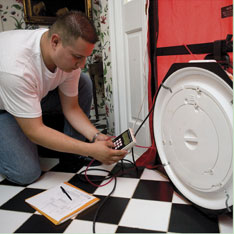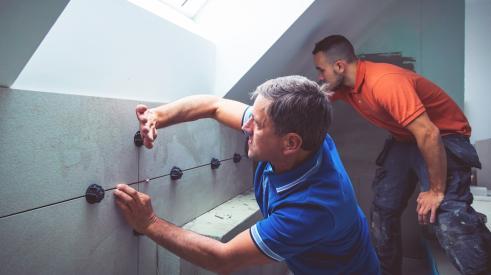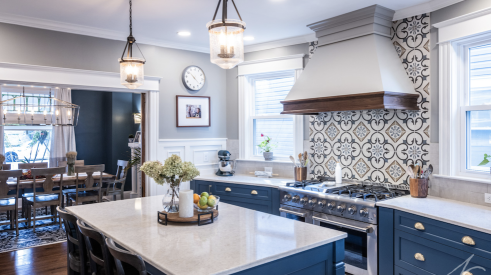How does a longtime builder of new homes survive in one of the most depressed housing markets in the country? By making the move to home-performance improvements.
Green Home Solutions (GHS) by Grupe is based out of Stockton, CA. Unemployment for the city and surrounding San Joaquin County was 16.7 percent in March 2012, and Stockton is one of the nation’s 10 worst housing markets, according to the Wall Street Journal’s MarketWatch.
“When the housing market failed, I was looking for something to really get my guys into,” said Mark Fischer, president of GHS and chief financial officer of The Grupe Company.
Since its inception in 2009, GHS has gone from zero to $3 million by emphasizing comfort instead of energy savings, and leveraging the existing strengths of the company and its region – the Grupe brand that the community has known for 45 years, as well as regional utility programs providing rebates to homeowners who invest in energy-saving projects.
Selling home-performance improvements can be a challenge even in strong housing markets. With little visible “bling” to show the neighbors, and energy savings that may take months or years to be significant, the likes of duct-sealing and attic insulation remain a decidedly unglamorous investment in the minds of most homeowners.
“Everybody wants to save money, but we're pretty adamant about emphasizing comfort,” said Fischer. “We don’t sell just savings, because as you know energy efficiency is a mixed bag,” depending on occupant behavior and other factors beyond the contractor’s control.
Making the switch from home builder to home performance requires some investment in time and training. Retrofits of existing homes require different skills than new construction. To begin, seven Grupe staff took the nine-day Home Performance with Energy Star (HPwES) training course. Since then, the GHS team plunged into courses offered by Saturn Resource Management, resulting in multiple certifications from the Building Performance Institute, Inc. (BPI).
Yet training alone doesn’t bring in work. GHS’s marketing and sales program is far-ranging and consistent, Fischer said, aimed not at overnight success but steady, long-term growth.
Key to that growth is taking advantage of available financing, rebate and tax credit programs, to help clients foot the average GHS project cost ($17,000 to $20,000, according to Fischer). “We see some very exciting financing programs that we think are really going to help our industry,” he noted, including low-interest 15-year loans, energy efficient mortgages (EEMs) and utility rebates based on modeled or actual results.
Active marketing includes traditional tactics, but Fischer credits personal outreach as more successful and cost-effective. A referral program, for instance, offers lenders and real estate agents from $50 to two percent of gross contract amounts, depending on whether presentations lead to signed contracts with the referrers’ clients. GHS also encourages clients to host post-project “Green Up” parties for their friends and neighbors.
“It's all about customer service and buyer satisfaction,” said Fischer. There are tens of thousands of potential clients within the company’s market reach. By encouraging homeowners to more thoroughly enjoy the homes they have, GHS may be leading off another 45-year growth wave.
For more information, contact BPI:
107 Hermes Road, Suite 110
Malta, New York 12020
Phone: 877.274.1274 or 518.899.2727
Builder expands services to include home-performance improvements to grow during the housing downturn
Add new comment
Related Stories
3 Areas Successful Remodelers Focus On
Industry advisor Mark Richardson shares what separates the losing from the winning in today’s market
Peppermill Finish
NAHB: Remodelers Face Challenges and Opportunities
Remodelers face a uniquely strong market yet remain challenged by codes and costs
The Neal’s Way Means Putting People First
For Neal’s Design Remodel, company culture is more than values on a wall. It’s everything.
Selling Your Company to Your Team
From company valuation to terms of the transfer, here’s a look at how three different remodelers made the deal work
NAHB Announces Action Plan for Housing Affordability
Six of the proposed 10 action items are important to residential remodelers
10 Different Questions You Should Ask Potential Clients
Mark Richardson says you need to rethink the questions you ask potential clients and the way in which you ask them
Pro Remodeler’s 2024 Pinnacle Experience Reaches New Heights
The sold-out event covered leadership, lead gen, sales, and technology
Brian Gottlieb Receives Remodeling Mastery Award
Presented by industry icon, Mark Richardson, the award celebrated Gottlieb’s extraordinary impact on remodeling













